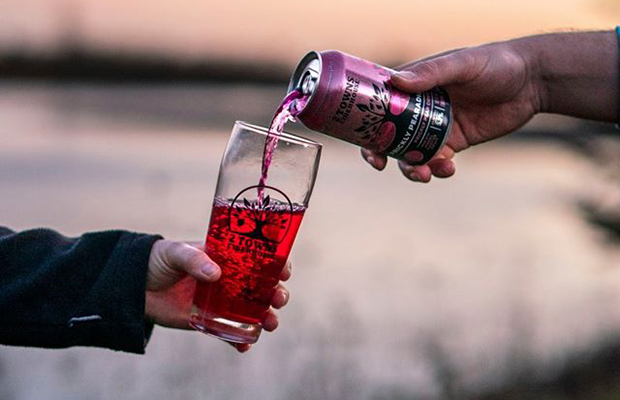
Moving from draft-only as a real small brewery and growing to where packaging products means either using a mobile canner or purchasing a canning line comes into play, deciding to house the line instead of leave space for someone to move a line in and out is a major decision.
That means either working with the space you have or preparing in advance.
Brewer connected with breweries that produce less than 8,000 barrels per year for their ideas on what works for them.
When Lone Tree‘s canning line was placed, Packaging Manager Dale Hollars said they had to build a 10’x6″ drain right in front of the line, run water lines, and CO2 lines from the other side of the brewery along the ceiling.
”A new air compressor was placed at the back of the room, dedicated for the canning line, with air lines again running along the ceiling,” he said. “Three 40-bbl brite tanks were also placed as close as possible to the line, right on the other side of our brand new drain.
”Of course we had to have a room big enough for the depalletizer, canning line, labeler, 6-pack ringer, and air compressor.”
Lone Tree’s building isn’t too big but Hollars said they have enough room to fit about four pallets in a row and one on the depalletizer.
”The person catching cans and stacking them on pallets is right by a large garage door, for easy access from the forklift,” he explained. “We can store a pallet of full cans in about three minutes or less after it is finished, as our cold storage is just across the parking lot in another unit with a delivery dock.
”We are lucky to have this location so close and easily accessible by forklift and then by pallet jack into the cold storage.”
Jersey Girl‘s machine and depalletizer take up a very small footprint (about 300 square feet), owner Chuck Aaron said.
“[It’s] somewhere around 24’x12’ in the production area,” he said. “For a machine that’s filing at 35 to 40 cans a minute, it’s perfect for our needs and allows us to retain a lot of space for other production needs.”
The design, Aaron said, is almost a full circle and the finish is right by where they start.
“This helps us keep the number of canning operators down because they can share responsibilities on the line when canning,” he said.
Because Jersey Girl has a counter-pressure filling process, spillage has reduced significantly as well.
“We are getting more volume from our tanks and greatly reduced Dissolved Oxygen levels,” Aaron said. “Spillage played a major role in deciding to go with this particular line [from CODI].”
The layout for Bootstrap‘s packaging hall, said Lead Packaging Operator David Brown, is that they have been able to take advantage of what space they have.
”We’ve set up our packaging line to essentially wrap around our tanks, taking advantage of the space that’s there while still leaving room for our brewing and warehouse operations,” he explained. “In general, we’ve found efficiency in palletizing and wrapping cans for storage close to our cold storage area.
”This eliminates the need to move full pallets around our warehouse more than is necessary.”
Bonfire‘s canning line area moves counterclockwise.
“Our brites are to the right of our Wild Goose canning line then at the 90 degrees to our manifold we have a ‘T’ that feeds our keg filling manifold,” said Fred Searles, Head Brewer. “This allows us to use a forklift to lift the finished product and place it immediately in the cooler without having to manually roll kegs around.”
Bonfire can also forklift the cans directly to a Ska Fabricating depalletizer, which reduces the need for special pallet jacks or manually dragging the cans to the depalletizer.
An accumulation table/conveyor allows the packaging team to adjust easily to the ebbs and flows of the day.





Be the first to comment